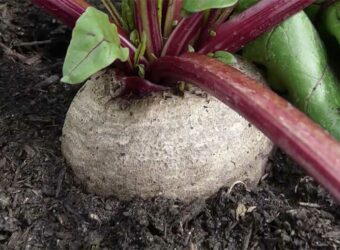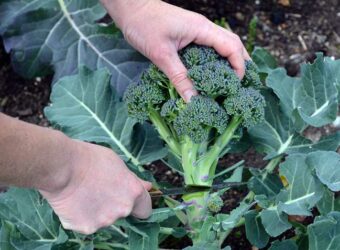When it comes time to select cucumbers for your garden, you’ll have hundreds of varieties to choose from. Where do you start? How do you pick?
One way to narrow your options is by deciding what type of cucumber you’d like to grow. Do you want a short and squat pickler, a thin-skinned English type, or a standard slicer?
If you want to grow slicing cucumbers that are perfect for salads, sandwiches, and more, slicing cucumbers are a great choice. Even after you narrow your sights on these slicing cucumbers, you’ll still have to choose between hundreds of varieties.
I’ll introduce you to some of the best varieties of slicing cucumbers you can grow.
What Is a Slicing Cucumber?
A slicing cucumber is a general term for any cucumber that’s harvested when it’s around six to ten inches long. These cucumbers are bigger than pickling cucumbers.
Some people consider thin-skinned English cucumbers a type of slicing cucumber, while others think these cukes are an entirely separate category.
What Makes a Good Slicing Cucumber?
Before we introduce some of the best slicing cucumbers, we’ll go over some of the criteria we used to make our selections.
Disease Resistance
Cucumber plants are susceptible to various diseases that can quickly wipe out the plants.
Some common fungal diseases that impact cucumber plants are downy mildew, powdery mildew, anthracnose, and targeted leaf spot. These diseases often occur and spread more readily in moist conditions, but they can also appear during other times.
Cucumber plants can also become infected by viruses, including cucumber mosaic virus and cucumber vein yellowing virus.
Bacterial wilt can also infect cucumber plants and quickly cause the whole plant to wilt.
So, what do these diseases have to do with picking out the best slicing cucumbers? Well, some varieties are more resistant to disease than others.
If you know that downy mildew or anthracnose often takes out your cucumber plants, it makes sense to look for varieties that are resistant to the disease in question.
Productivity
All slicing cucumber plants will produce fruits, but some varieties will produce more than others. If you are seeking the largest harvest possible, look for varieties that are heralded for their abilities to churn out lots of fruits.
Taste
One of the most important aspects of a good cucumber is taste!
The best slicing cucumbers are supremely crunchy with a sweet flavor and a hint of acidity. They’re never bitter and easy to enjoy without peeling.
If you’re seeking slicing cucumbers that are free from bitterness, look for burpless varieties. These cucumbers have been specifically bred to be low in cucurbitacin, the compound that causes cucumbers to become bitter.
The 8 Best Slicing Cucumbers
All of the following slicing cucumbers are great, but they do have some differences in growth form, days to maturity, disease resistance, and other factors.
1. Corinto
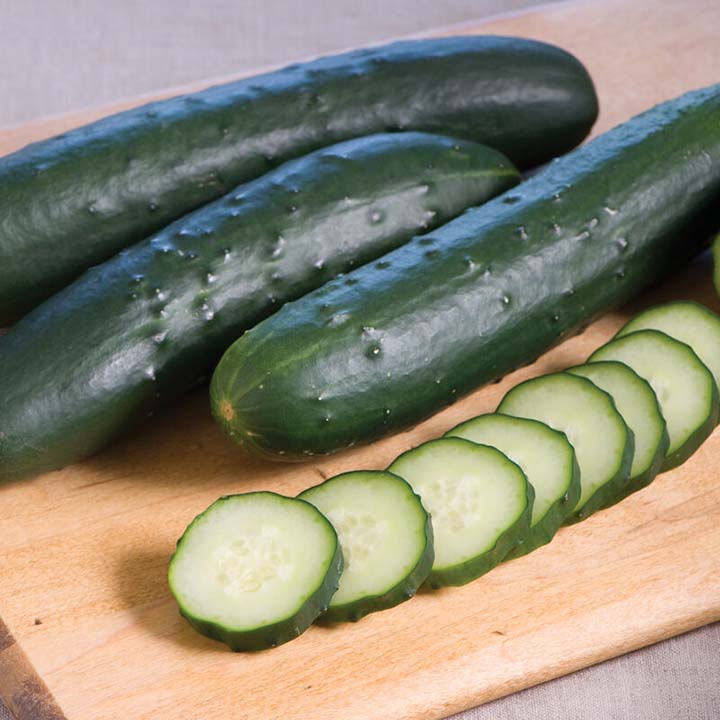
Mature length: seven to eight inches
Days to maturity: 48 days
Disease resistance: cucumber mosaic virus, powdery mildew, cucumber vein yellowing virus
The Corinto cucumber is a classic slicing cucumber with waxy, dark green skin and a medium length. It produces fruits faster than other slicers, making it a good choice if you can’t wait to sink your teeth into the first cucumber of the season.
It can also thrive in both cool and hot temperatures, meaning it works well throughout the growing season. And since it’s parthenocarpic, it can produce fruits even if the flowers aren’t pollinated. So, you stick these plants in a sealed greenhouse or under some row cover without worry.
Corinto is a hybrid variety, so saving the seed will result in plants that are genetically different from the parents. That means you are best off buying new seeds each year.
These seeds are expensive but bring strong disease resistance to powdery mildew and a few common viruses.
Look for Corinto cucumber seeds at Johnny’s Selected Seeds.
2. Marketmore 76

Mature length: eight to nine inches
Days to maturity: 65 days
Disease resistance: scab, cucumber mosaic virus, powdery mildew
Marketmore 76 should be one of your top choices if you want an open-pollinated slicing cucumber. This variety produces dark green fruits that remain sweet and low in bitterness throughout the course of the season.
Since Marketmore 76 is open-pollinated, the plants will produce seeds that have genetics that are very similar to the parents. That means you can have the seeds and replant them the following year. Selecting seeds from healthy plants and/or especially tasty fruits can help you produce an even better slicing cucumber!
Marketmore 76 begins producing cucumbers a bit later than other slicing varieties, but it continues to set fruit for multiple weeks or even months. Just make sure to provide the plants with lots of water and sun.
The plants have high resistance to cucumber mosaic virus, powdery mildew, and scab as well as a bit of resistance to angular leaf spot, downy mildew, and anthracnose.
You can find Marketmore 76 seeds from various seed breeders, including High Mowing Organic Seeds and Fedco Seeds.
3. Bristol
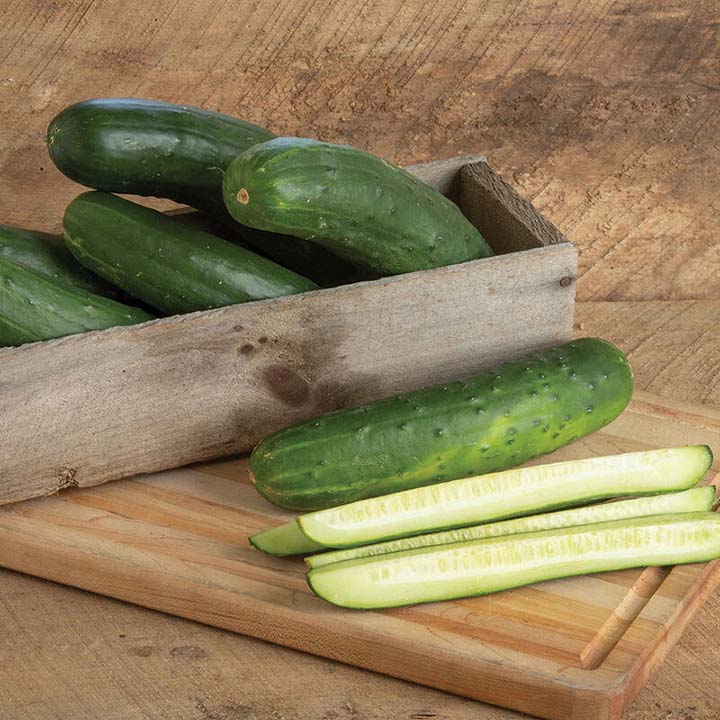
Mature length: eight inches
Days to maturity: 54 days
Disease resistance: anthracnose, angular leaf spot, cucumber mosaic virus, downy mildew, papaya ringspot virus, powdery mildew, scab, zucchini yellow mosaic virus
Bristol is an especially good choice if your cucumber plants have historically succumbed to downy mildew. That’s because this variety has high resistance to this fungal disease. While most plants die within a week of becoming infected with downy mildew, Bristol plants can continue to produce fruits for multiple weeks after they’ve been infected.
Along with high resistance to downy mildew, the plants are also resistant to anthracnose, scab, powdery mildew, and more.
The fruits have a medium green and waxy skin. As long as you harvest the fruits at the proper size, they will be crunchy and sweet with few seeds.
Bristol cucumbers are gynoecious, which means they only produce female flowers. That means that while they produce lots of fruits, they also need a cucumber with male flowers for pollination and fruit-set to occur.
You can purchase Bristol seeds from Osbourne Quality Seeds and Johnny’s Selected Seeds.
4. The General
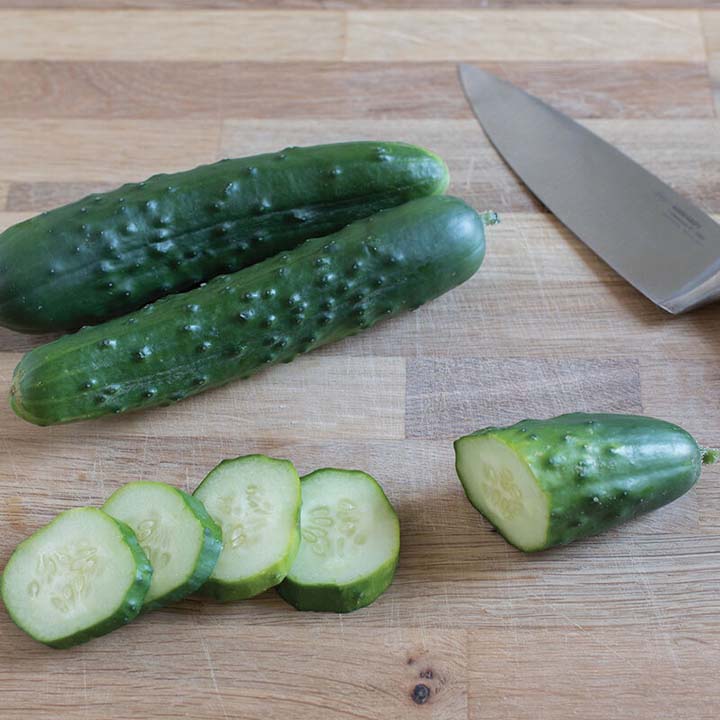
Mature length: eight inches
Days to maturity: 52 days
Disease resistance: cucumber mosaic virus, powdery mildew, scab
What used to be known as General Lee, is now simply known as The General. This hybrid slicing cucumber has a crunchy texture and sweet taste that makes it a popular choice in the kitchen.
Since the plants are gynoecious, you’ll need to plant a variety with male flowers to allow for pollination and fruit set. But since every flower on The General plants can produce fruits, expect heavy yields of delicious slicing cucumbers.
Due to the heavy fruit set, you may only need to plant one or two plants to end up with many cucumbers. When plants are healthy, and the weather is good, you can expect to harvest one to four cucumbers from a single plant each day!
The General isn’t the most disease-resistant slicing cucumber, but it does withstand pressure from powdery mildew, cucumber mosaic virus, and scab.
You can look for The General seeds at Johnny’s Selected Seeds.
5. Paraiso

Mature length: eight to ten inches
Days to maturity: 55 days
Disease resistance: cucumber mosaic virus, powdery mildew, scab
Paraiso is a hybrid slicing cucumber known for its high yields and tolerance of cooler temperatures. Since it doesn’t mind when the weather is cooler, it’s a good choice for Northern areas or early-season plantings.
The fruits have dark green skin with a few bumps. The flesh is supremely crispy and has a sweet flavor with a hint of acidity.
Paraiso is a parthenocarpic variety, meaning the flowers do not need to be pollinated in order to produce fruits. That means it can thrive in sealed greenhouses and under row cover. I sometimes choose parthenocarpic varieties and cover the plants with insect netting to protect them from cucumber beetles.
Although Paraiso has improved vigor from varieties like Corinto, the seeds are also more expensive. Therefore, you may only want to grow them if you’re growing them in a high-value area like a greenhouse.
You can purchase Paraiso seeds at High Mowing Organic Seeds.
6. Poinsett 76
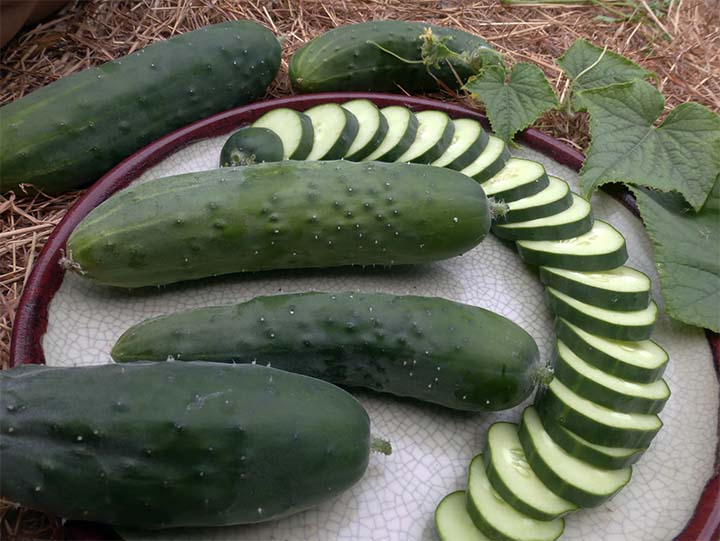
Mature length: nine inches
Days to maturity: 62 days
Disease resistance: angular leaf spot anthracnose, downy mildew, powdery mildew
Poinsett 76 cucumbers are dark green slicing cucumbers that are both long and thick at maturity, which can either be a pro or con, depending on your preferences. Despite their larger size, the fruits remain sweet and crunchy.
Due to its disease resistance package, many southern growers like Poinsett 76 for a basic slicing cucumber. It can tolerate angular leaf spot, anthracnose, downy mildew, powdery mildew, and spider mite pressure.
Since it’s open-pollinated, you can save and replant the seeds the following year. If you choose to save seeds, try to select seeds from the healthiest and most productive plants.
Look for Poinsett 76 seeds at Southern Exposure Seed Exchange and Kitazawa Seed Company.
7. Diva
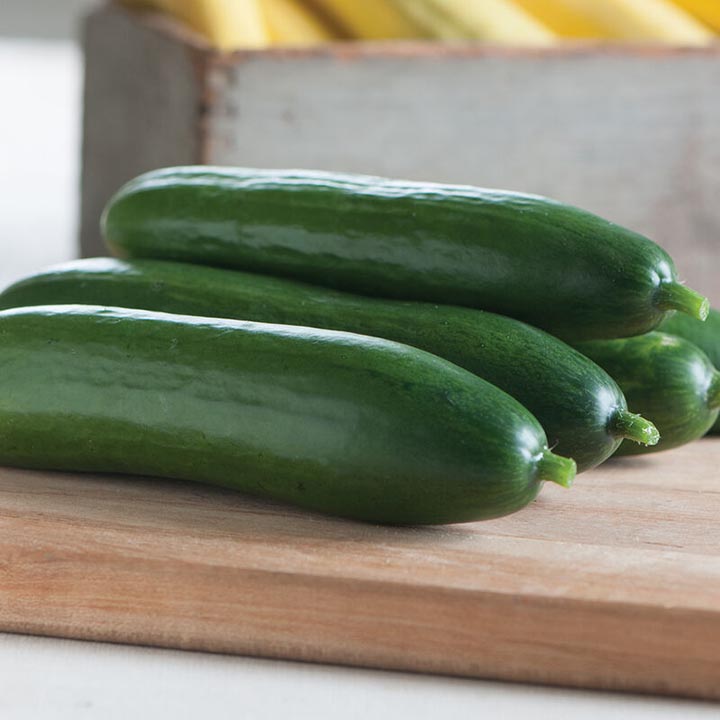
Mature length: seven inches
Days to maturity: 58 days
Disease resistance: cucumber vein yellowing virus, powdery mildew, scab
While American slicing cucumbers have bumpy skin, European slicers have smooth and thin skin. And Diva is one of the best European slicing cucumbers available!
These cucumbers have bright green skin that’s never bitter. When you bite into one of the mature cukes, you’ll find a delightfully crisp texture and sweet flavor without a hint of bitterness.
Diva is open-pollinated, which means seeds will produce plants that resemble the parents. Saving seeds from year to year can help you save a little money and end up with a variety well-suited variety to your area.
Diva isn’t the most disease-resistant slicing cucumber, but it does have moderate resistance to scab, powdery mildew, and cucumber mosaic virus.
If you plant this variety, take note that the cucumbers are ready to harvest at a smaller size than other varieties. Picking them when they’re five to seven inches long will provide you with the best-tasting cukes.
You can find Diva seeds at Johnny’s Selected Seeds
8. Socrates
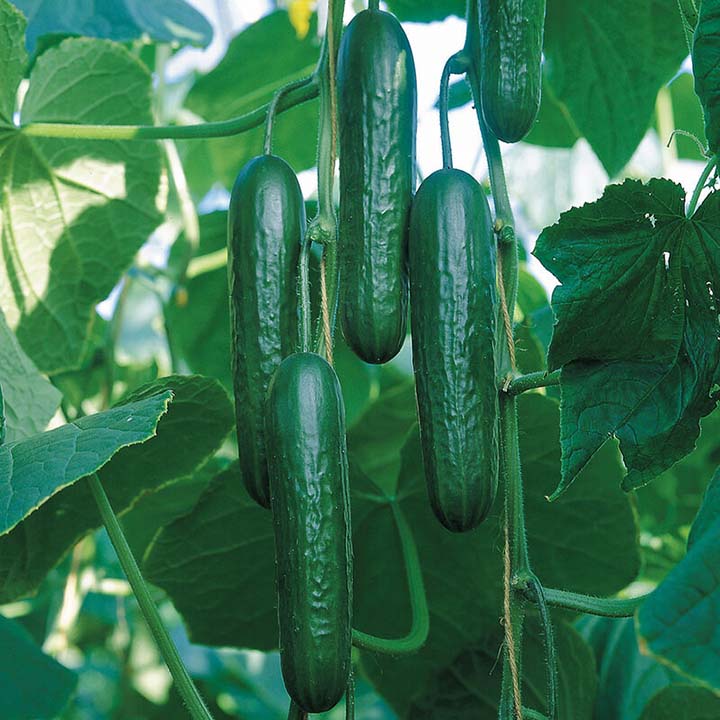
Mature length: seven to eight inches
Days to maturity: 52 days
Disease resistance: powdery mildew, target spot, scab
Socrates is another great thinned-skinned slicing cucumber. It’s an English type, with smooth, dark green skin.
This hybrid variety is one of the most stress-tolerant slicing cucumbers on the market. It can thrive in both cold and heat, making it a great addition to the garden or farm.
This slicing cucumber is both gynoecious and parthenocarpic. That means it only has female flowers and doesn’t require pollination in order to set fruit. This combination results in impressive yields and the ability to grow these plants in sealed tunnels or under covers.
Although Socrates can tolerate stress fairly well, it doesn’t have strong resistance to many common cucumber diseases.
You can purchase Socrates seeds from Johnny’s Selected Seeds.
Tips for Growing Great Slicing Cucumbers
Picking a good slicing cucumber variety is just the first part of growing great cucumbers. You’ll also need to choose the right location and provide your plants with the proper care.
Wait until nighttime temperatures remain above 60°F before placing your cucumbers outside. If you plant cucumbers early in the spring, it’s best to transplant seedlings. But you can direct seed during warmer weather.
Choose a location that receives full sun, and space your cucumber plants two to three feet apart. If you’re trellising the plants, you can plant them a bit closer together.
Since cucumbers are mostly water, provide enough water to keep the soil moist. Water the base of the plants to keep the leaves dry and prevent the onset and spread of disease.
Once you notice flowers on your cucumber plants, begin checking the plants every few days for fruit. Harvest cucumbers every one to two days to catch them when they’re just the right size.
Grow the Best Slicing Cucumbers
Now that you know some of the best slicing cucumber varieties, it’s time to figure out which ones are best for your garden. Consider disease resistance, seed cost, and productivity to choose the best variety for you.


